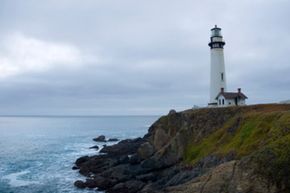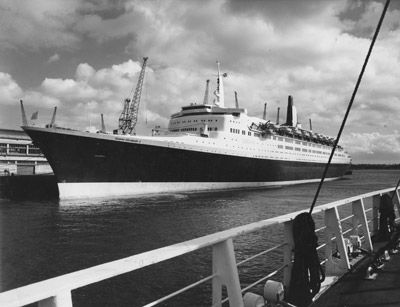To the weary sailors of yesteryear, it represents the final stretch -- and perhaps the most hazardous portion -- of a long voyage. To modern-day aficionados, it is a glimmering monument to the history of a maritime community. But whatever meaning gets attached to it, a lighthouse is something far simpler: a tower and a beacon.
In an era before GPS and other navigational apparatuses, lighthouses served two primary purposes. The first was illuminating waterways made treacherous by shoals, reefs, rocks and other hazards as ships left the open ocean and pulled into port. Most lighthouses also include fog signals such as horns, bells or cannons, which sound to warn ships of hazards during periods of low visibility.
Advertisement
The second purpose is to serve as a reference to mariners. An individual lighthouse distinguished itself with its day mark -- the color schemes and patterns on the tower -- and its light signature. For example, a lighthouse might emit two flashes every three seconds to distinguish it from a lighthouse that emits four flashes every three seconds. Even today, if the GPS goes on the fritz, crews reference light lists to plot a course -- those regional indices of lighthouses and their distinguishing traits.
At points before their automation in the 20th century, lighthouses had to accommodate cumbersome systems as well as a light-keeping staff to keep shining 24 hours a day. In addition to a lighthouse, a complete light station might include a fog signal building, a boathouse, living quarters for the keeper and his family and a separate oil house to cordon off the flammable agents that powered the lamps.
No two lighthouses have been built the same. Early lighthouses used whatever materials were available locally: wood, brick, stone, concrete, reinforced steel and cast iron. Some lighthouses are placed onshore overlooking the water, while some are built offshore on reefs or patches of rocks. Even the height of the tower changes from one lighthouse to the next depending on the view from the water. A lighthouse overlooking a 100-foot (30.48 meter) cliff, for example, wouldn't need to be built as tall as one positioned closer to sea level.
There are regional similarities in construction, however: Lighthouses built in the Outer Banks of North Carolina are built in intervals so that if a ship maneuvering down the coast lost sight of one lighthouse, it would find the glow of the next one [source: Gales].
Click ahead for a glimpse of lighthouses through the years.
Advertisement














